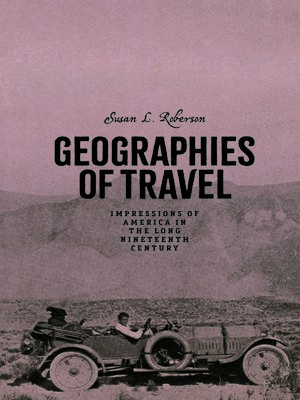Geographies of Travel
ebook ∣ Impressions of America in the Long Nineteenth Century
By Susan L. Roberson

Sign up to save your library
With an OverDrive account, you can save your favorite libraries for at-a-glance information about availability. Find out more about OverDrive accounts.
Find this title in Libby, the library reading app by OverDrive.



Search for a digital library with this title
Title found at these libraries:
| Library Name | Distance |
|---|---|
| Loading... |
Travel writing was the most popular genre of writing in the nineteenth century. Initially published in newspapers and journals as dispatches from the road, these works allowed readers to join in on fabulous adventures by becoming armchair tourists—second-hand voyeurs of the peoples and places the writer visited. In order to take readers along on their journeys, travel writers typically recorded miles covered and dates of travel in a log or diary. They also documented key details of the experience itself, describing the conditions of the road, the people they met, and their accommodations, food, and clothing. The nineteenth century, specifically, offered a form of travel writing that commented on the ruined environment that ran afoul of the century's ethos of progress, with voices such as Henry David Thoreau, John Muir, and John James Audubon exploring a newfound environmental consciousness.
Geographies of Travel is organized geographically by region, with essays examining local journeys in the Northeast, Midwest, Far West, and the South. This regional arrangement allows readers to consider the geographic imagination of each region and the kinds of travel it invited, as well as providing valuable insight on the ways in which Americans reacted to both natural and social regional landscapes. Each region is treated chronologically so as to interrogate not only individual narratives but also the ways that travel, tourism, and modes of transportation evolved over time. The work concludes with an examination of Henry James's The American Scene in a coda that brings together his astute observations of the Northeast and the South at the turn of the century. Occasional interludes point to the ways that travel reverberates in the artistic work of some of the authors, making connections between travel and the imagination.







